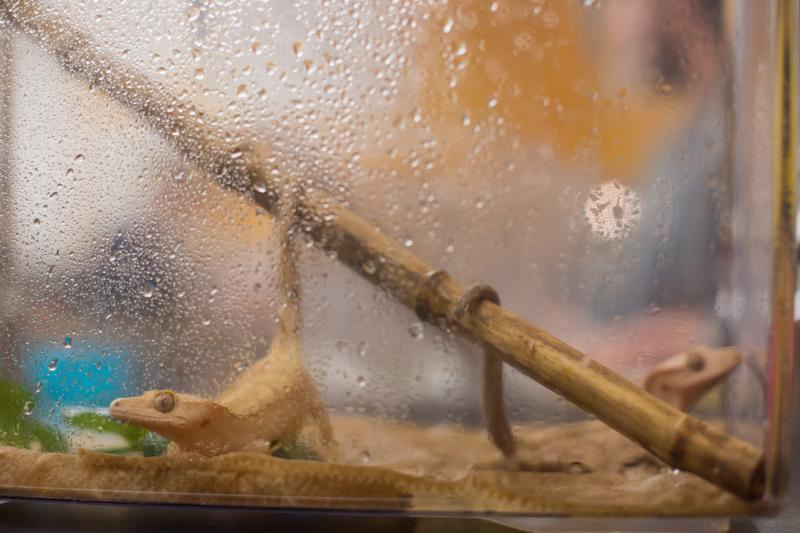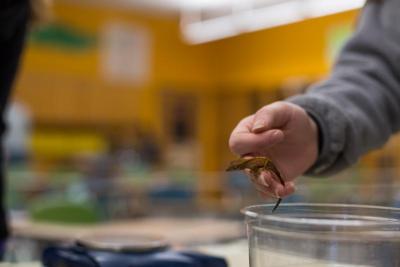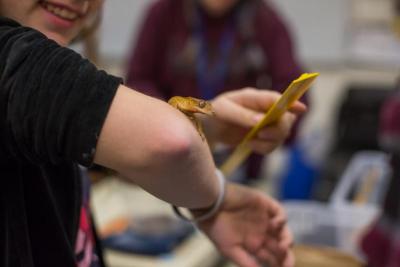Geckos galore in zoology class
If you’re afraid of reptiles, you may want to stay out of Wareham High School teacher Craig Berriault’s classroom.
Herpetophobia aside, there are more than 40 crested geckos living in the classroom (on purpose, of course), who are under the watchful care of Berriault and his zoology students. Berriault said he has had a fascination with the scaly creatures since he was a boy, but has no idea what exactly attracts him to reptiles.
“I could say they are scaly, and that’s why I like them,” Berriault said. “I just think they are so cool. … even as an adult. My parents thought it would just be a phase.”
Berriault began the zoology class several years ago, with just three breeding adults, after getting a grant through the Wareham Foundation for Education for the class and the reptiles. He has been breeding them since then, because it allows the students to see a gecko’s life cycle, from dime-sized, leathery egg to popsicle-sized adult.
He also said the rapidly-growing population of geckos allows him to independently keep the program going: rather than applying for another grant, Berriault said he and the students attend reptile shows, and sell some of the geckos to support the cost of their classroom care.
All reptiles are cold-blooded, which means they can’t regulate their own body temperatures. This means they require a higher, steady temperature to survive. Though most reptiles need to live in hot climates, such as deserts or the tropics, crested geckos can live at lower temperatures, and are fairly low-maintenance.
The students feed the geckos small, tropical cockroaches, which Berriault said are one of the easiest, cleanest food sources to manage in-classroom, as “crickets smell bad,” and tend to be more expensive.
Berriault said the geckos live in the classroom day-to-day, but that they do go home with students over longer breaks.
Berriault’s love for the literally leaping lizards has rubbed off on his students: several let the geckos hang out on their arms, shoulders, and hands, while they recorded the lizards’ length and weight. A couple tried to escape their caretakers’ bodies, but were thwarted, before doing any damage to their not-invulnerable bodies by jumping off the lab tables in their best Buzz Lightyear impressions.
Berriault said he thinks the class allows students a “better appreciation of nature,” which he thinks is lacking in today’s modern environment, “with cell phones and technology” always at the ready. The whole point he said, is to “get them engaged – without that, we are never going to save our planet.”
In February, Berriault and seven students will be going to Belize on an educational trip – not that this is Berriault’s first time in the tropics, of course: “My wife said, ‘We base our vacations around reptiles,’ and I said, ‘Yeah, we kind of do, now that I think about it. Sorry?’”
“As I get older, I have more appreciation for everything in the world, and I am encouraging the kids to travel,” Berriault said. “Spend your money not on shoes and stuff, spend it on experiences.”


























